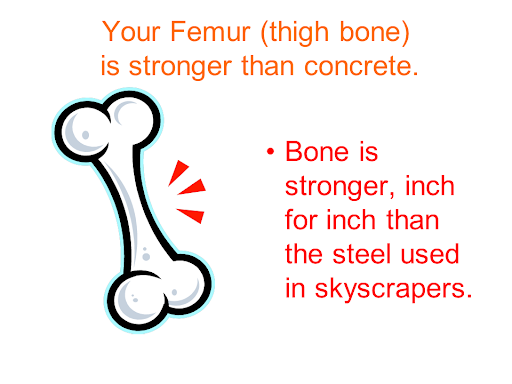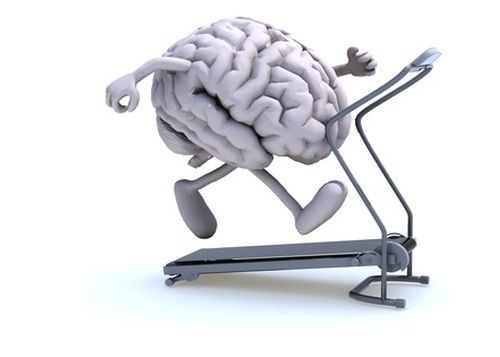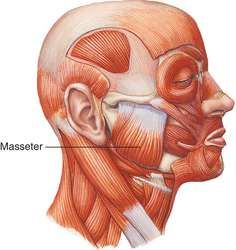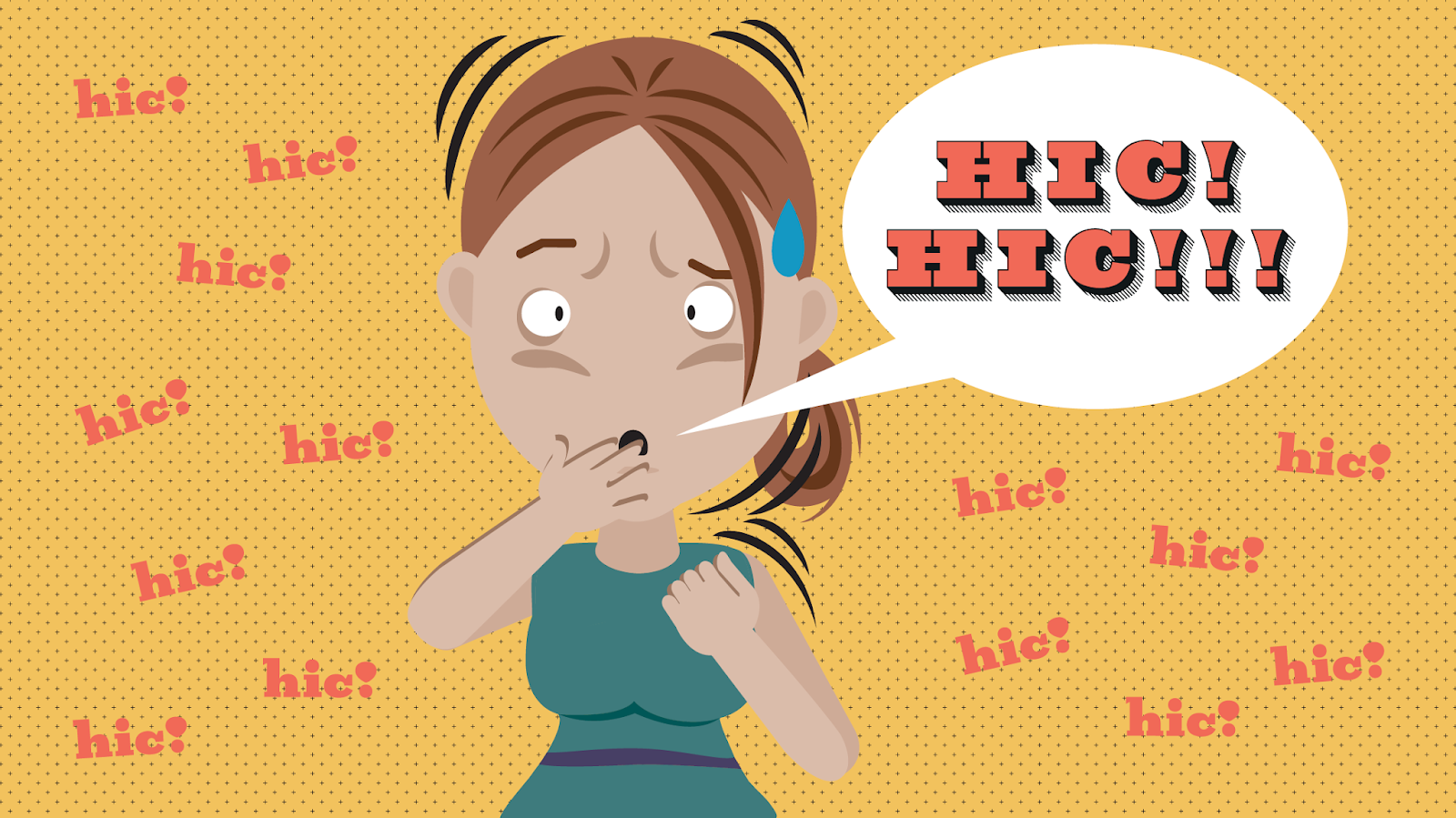By Shannon Larkins, PT
1) What’s a bone in your body that you can never break? Your funny bone.
What we call the funny bone is not actually a bone at all! It’s a nerve called the ulnar nerve. And it’s not very funny when you bump it – it’s an uncomfortable feeling that can go all the way down from your elbow to your little finger.
Why does it hurt so much when you hit your funny bone?

Nerves are sensitive tissues in the body. They are pathways that send messages from your brain to all parts of your body and back again. The ulnar nerve, or “funny bone,” is on the inside of your elbow and its job is to send messages to muscles in the wrist and hand and also to send information to your brain about what sensations you’re feeling in your 4th and 5th fingers and the part of your hand right under those fingers. There isn’t much padding around this nerve, so when you bump your elbow, you often hit the nerve and OUCH!
2) Human thigh bones are stronger than concrete.
The thigh bone is called a femur and not only is it the strongest bone in the body, it is also the longest. Because the femur is so strong, it takes a large force to break or fracture it – usually a car accident or a fall from high up. To fix it properly requires an operation. Doctors use strong metal screws and plates, or long rods made of titanium to hold the broken bone together so that it can heal.

3) Exercise makes you smarter.
We know that exercise like playing tag or soccer with your friends is fun. It also makes our heart beat faster and our muscles work and so it’s great for healthy bodies. But scientists are discovering that exercise helps us learn. Exercise helps get our brains ready by focusing our attention and making us more alert. It also creates changes in the brain that makes it more receptive to learning. So next time you’re having some trouble with a homework question, take a break and run around for a bit, then try the problem again. You just might find that you’re able to figure it out.

4) What is the strongest muscle in the body?
Well, that depends, because there are many ways to measure strength. Generally, the bigger the muscle the stronger it is, so we could say that the muscles in the front of the thigh (the quadriceps) or back of the hip (the gluteus maximus) win the prize because they are the biggest. But many experts will say that a much smaller muscle is the strongest – the masseter. This is the main muscle that attaches to your jaw and works to close your mouth. Because of the forces it can create to chew (up to 200 lb at the molars), based on weight, this muscle is the champion.

5) What happens when you get the hiccups?
Hiccups are one of those things we’ve all experienced and something we cannot control – they seem to come out of nowhere! To understand them, we need to know about a muscle called the diaphragm. It is a dome-shaped muscle that stretches across your body between your lungs and your stomach. It is very powerful and when it contracts, it pulls air into your lungs. When it relaxes, the air is forced out. This is how we breath. When the diaphragm stops working normally, it goes into a muscular spasm and we get an attack of the hiccups. This can happen after eating and drinking too much and having your stomach stretch so that it presses up against the diaphragm. Talking while eating can let extra air into your stomach and lead to the same thing. Another reason not to talk with your mouth full!

We hope that you’ve enjoyed reading these fun facts. Remember, it takes 43 muscles to frown but only 17 muscles to smile!
